In emergency rescue operations, these devices are often seen on site:
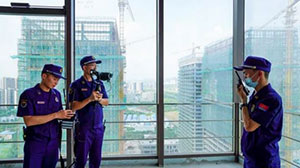
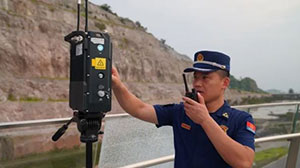
Answer: These are ad-hoc network devices, commonly referred to as image and voice ad-hoc network devices. In fire rescue operations, using wireless ad-hoc network technology can enhance communication coverage capabilities in complex environments and enable rapid large-scale on-site networking. Swipe down to begin today's learning.
I. What is Wireless Ad-hoc Network Technology?
A wireless ad-hoc network is a wireless communication network with a unique structure, originally known as an"Ad-hoc" network. In wireless multi-hop scenarios, network communication relies on cooperation and information forwarding between nodes. All nodes in a wireless ad-hoc network have equal status and similar complexity. Two nodes that are too far apart to communicate directly can relay control and data messages through multiple hops, completing the full communication process.
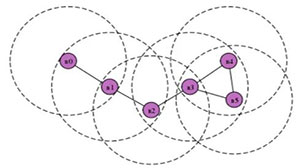
This distributed topology of wireless ad-hoc networks is entirely different from traditional centralized cellular networks. Its main advantages include strong network robustness, ease of deployment and installation, flexible structure, load balancing, and non-line-of-sight transmission. It is particularly suitable for use in urban complex buildings and major natural disaster sites, serving as a fallback communication method.
II. Applications of Narrowband Ad-hoc Network Technology
In fire rescue communications, narrowband ad-hoc network devices are primarily used when voice communication is unreliable. They quickly extend walkie-talkie signals, eliminate communication blind spots, and connect on-site command and operational networks. Compared to broadband ad-hoc networks, narrowband ad-hoc networks offer better performance in terms of coverage range and latency under the same conditions, making them more stable and reliable. Narrowband ad-hoc networks typically do not involve routing concepts and use broadcasting to enable all nodes within the network to receive and forward data.
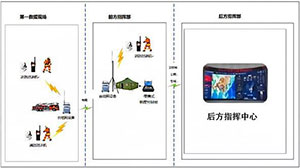
III. Applications of Broadband Ad-hoc Network Technology
Broadband ad-hoc networks, also known as MESH networks, although less stable and with smaller coverage ranges compared to narrowband networks, typically provide end-to-end bandwidth of 2 Mbps or higher. Their key advantage lies in supporting high-data traffic, such as real-time video services. When on-site video feeds lag, deploying image ad-hoc network devices enables the transmission of live video and data information, along with wide-area network coverage, supporting various dynamic network topologies. Common broadband ad-hoc network devices include vehicle-mounted ad-hoc base stations, portable ad-hoc base stations, and individual soldier ad-hoc devices, utilizing technologies such as WiFi, COFDM, and LTE.
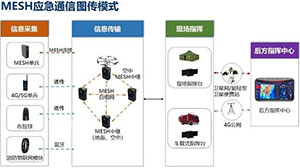
IV. Applicable Scenarios
1. Rescue Operations in Urban Complex Buildings
Urban complex buildings refer to high-rise, underground, and large-scale composite structures.
① Challenges: The complex structures of such buildings often cause significant signal shielding and attenuation, resulting in numerous communication blind spots.
② Deployment Methods: For above-ground signal coverage in urban complex buildings, base stations should preferentially be installed at rooftop edges, near windows, in the center of floors, and near staircases and corridors. For underground signal coverage, base stations should preferentially be placed at entrances/exits and turns. Typically, one voice ad-hoc base station can cover 10-15 above-ground floors and 1-2 underground floors, while one image ad-hoc base station can cover 5-8 above-ground floors and 1-2 underground floors. The number of base stations should be adjusted based on the actual building conditions and communication performance.
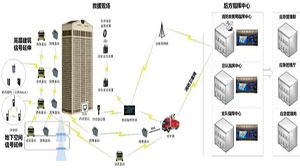
Precautions:
(1) Ad-hoc base stations should not obstruct attack or retreat routes and must be clearly marked. Communication performance should be tested after deployment.
(2) If wireless coverage blind spots persist inside or outside the building, utilize surrounding terrain and equipment (e.g., portable antenna towers, elevated fire trucks, tethered drones, or nearby high-rise buildings) to deploy additional base stations.
2. Rescue Operations in Deep Spaces
Deep spaces such as tunnels, caves, and mines are generally characterized by long depths, complex geological conditions, and multiple sources of signal interference.
① Challenges: Severe signal absorption and shielding in deep spaces hinder wireless network penetration, rendering conventional communication methods ineffective. These scenarios place high demands on the multi-hop relay extension capabilities of ad-hoc network devices.
② Deployment Methods: To meet emergency communication needs in special scenarios, base stations must support both wireless multi-hop relay and optical cable daisy-chaining capabilities. A combination of"wired + wireless" deployment should be adopted, allowing individual soldiers to move freely within the network without service interruption, ensuring real-time image transmission to the command center.
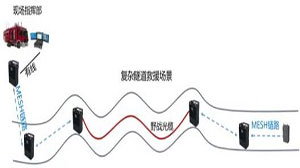
Precautions:
(1) For complex structures like subway tunnels or super-large complexes, narrowband ad-hoc network power can be adjusted to 45W.
(2) When deploying base stations underground or in tunnels, wired methods should be used whenever possible.
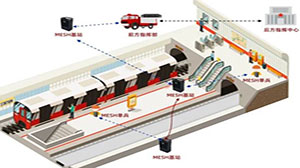
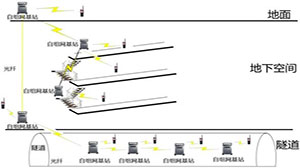
Major natural disasters include earthquakes, mudslides, landslides, floods, etc.
① Challenges: These disasters often affect large areas and involve multiple rescue forces, leading to chaotic on-site communication. Public communication networks in disaster areas are often severely damaged, requiring the setup of dedicated communication networks covering all rescue zones.
② Deployment Methods: Combine long-endurance drones, tethered drones, rotor drones, portable antenna towers, and ground-based supplementary points to deploy ad-hoc base stations. This creates an integrated emergency communication network spanning"air, high points, and ground," achieving comprehensive audio and video transmission coverage across large-scale natural disaster areas.
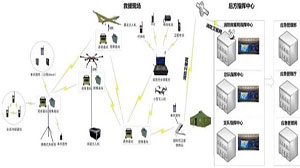
The widespread application of wireless ad-hoc network technology addresses the emergency rescue needs of urban complex buildings (e.g., high-rises, underground spaces, large complexes) and major natural disasters (e.g., earthquakes, floods, mudslides). It resolves the"last mile" communication challenge, ensures image and voice communication coverage, rapidly enhances operational capabilities, and provides robust support for building modern command systems.